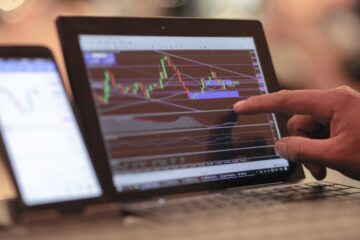Best Practices for Precision Measurement from Industry Leaders
In today’s fast-paced and highly accurate world, precision measurement is crucial for success in various industries. That’s why it’s essential to understand the best practices and techniques to achieve accurate and reliable measurements. In this blog, we bring you an exhaustive guide on precision measurement.
Calibration
Calibration is a crucial technique in ensuring the accuracy and reliability of measurements across various fields and industries. It involves comparing the output of a measurement instrument to a known reference standard. This process identifies discrepancies and allows for adjustments, guaranteeing that subsequent measurements are precise.
Furthermore, experts from ATT metrology company reckon that calibration helps mitigate the effects of wear and tear on measuring instruments. Over time, instruments can experience drift or degradation in accuracy due to regular use. By periodically calibrating them, operators can detect and rectify any deviations, thereby maintaining the integrity of measurements.
Standardization
Standardization involves establishing a set of uniform criteria or protocols for conducting measurements. This ensures consistency across different instruments and operators, eliminating potential sources of error. For example, in the manufacturing sector, standardization of measurement units like inches or millimeters ensures that components fit together precisely.
Moreover, ATT metrology company professionals note that standardization facilitates global communication and comparison of measurements. It allows data to be shared and interpreted accurately across borders and industries.
Environment
Creating a controlled environment is critical in ensuring accurate and reliable measurements. This involves managing temperature, humidity, and pressure to minimize their influence on measurement. For instance, maintaining a stable environment in scientific laboratories is essential when conducting experiments involving sensitive instruments or materials.
In industrial settings, controlling the environment is equally crucial. For example, in manufacturing processes, maintaining a consistent environment ensures that measurements of materials and components are consistent and repeatable. Pros from ATT metrology company advise that by eliminating or mitigating external factors, a conducive climate to accurate measurements is established, forming a foundational step in various scientific and industrial endeavors.
Operator Training
Operator training is a pivotal technique in achieving precise and dependable measurements. It involves educating individuals on proper measurement techniques, instrument usage, and adherence to established protocols. Well-trained operators understand the intricacies of their instruments, enabling them to perform measurements with a high degree of accuracy.
Furthermore, operator training helps minimize human error, a common source of measurement inaccuracies. Trained operators are more adept at recognizing and addressing potential pitfalls, ensuring reliable measurements.
Verification
Verification involves independently assessing measurement results using an alternative method or instrument. This process helps confirm the validity of the initial measurement, providing an additional layer of confidence in its accuracy.
Moreover, verification helps identify and rectify any potential errors or discrepancies. Any inconsistencies can be addressed by comparing results from different methods or instruments, leading to more reliable measurements.
Document and Record-Keeping
Documenting and maintaining accurate records involves recording all relevant information about the measurement process, including instrument specifications, environmental conditions, and operator details. This documentation serves as a reference point, allowing for traceability and verification of measurements.
Furthermore, thorough record-keeping helps identify and address any discrepancies or outliers in the data. It provides a historical context that can be used to troubleshoot and rectify any issues that may arise during the measurement process.




